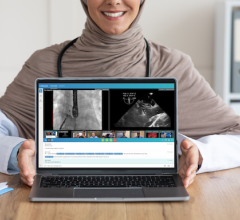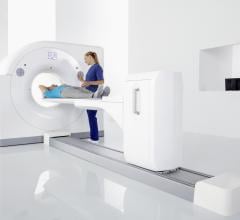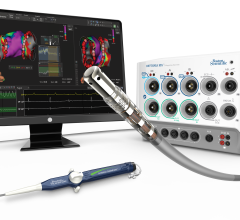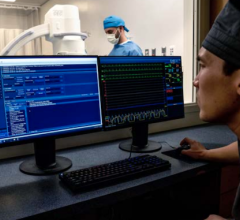The FDA has cleared Medtronic’s Attain StarFix OTW (over-the-wire) lead (Model 4195), an active fixation left-heart lead for cardiac resynchronization therapy (CRT).
The Xcelera R2.2 upgrade is a new version of the Xcelera multimodality cardiology image management, analysis and reporting solution, designed to offer enhanced functionality and greater workflow efficiency.
he Powerheart AED G3 is designed with Rescue Ready technology that self-checks all main components daily. The device ...
Providing exceptional cardiovascular care for patients to achieve the best possible outcomes is the number one goal for ...
Angiography systems have been a diagnostic mainstay in cardiac cath labs for more than 50 years, playing a pivotal role in the diagnosis and treatment of heart and vascular diseases. Replacing imaging intensifiers with flat panel detectors (FPD) for angiography has broadened digital imaging’s role in the cath lab.
Boston Scientific launched its Atlantis 018 Peripheral Imaging Catheter, which reportedly brings existing 40MHz coronary ...
The FDA has approved the LipiScan Coronary Imaging System, an angiography laser scanner by InfraReDx Inc., which is intended to characterize fatty deposits in coronary vessel walls using near infrared diffuse spectroscopy.
Cardiac positron emission tomography (PET) is growing in popularity among cardiologists because it provides the ability ...
The recently FDA-approved COGNIS CRT-D and the TELIGEN ICD from Boston Scientific are among the smallest and thinnest high-energy devices at 32.5 cc and 31.5 cc respectively, while less than 10 mm thick. Both devices offer extended battery longevity over previous company devices, self-correcting software and improved programming technology.
September 3, 2008 – While a recent study into whether using unselected and selected bone-marrow derived cells can help with regeneration of heart tissue did not lead to significant improvement of LVEF and LV volumes in comparison to control group, there was a trend toward significant improvement of LVEF in patients with severely depressed baseline LVEF receiving either MNC or CD34 CXCR4 bone ma
While the primary reason hospitals adopt new technology is to increase patient care and produce better outcomes, there are many other factors that also affect purchasing decisions.
When performing radiofrequency (RF) ablation to treat cardiac arrhythmia, medical professionals must balance the safety ...
Spectranetics Corp. recently announced the availability of its LLD EZ Lead Locking Device (LLD) for the removal of ...
TRUMPF Medical Systems Inc. offers an in-light high-definition (HD) operating room camera, the TruVidia HD, which ...
St. Jude Medical’s Promote RF CRT-D (cardiac resynchronization therapy defibrillator) and Current RF ICD (implantable cardioverter defibrillator) are radiofrequency (RF) wireless devices used to treat patients with heart failure and with potentially lethal heart arrhythmias.
Change Healthcare Cardiology Hemodynamics is an integrated hemodynamic monitoring system for monitoring vital signs and ...
September 1, 2008 - More than 22 million people worldwide suffer from heart failure, and most heart failure hospitalizations are due to excessive fluid accumulation in the chest cavity, and new data presented at the European Society of Cardiology Congress this week shows Medtronic’s devices equipped with OptiVol Fluid Status Monitoring Alerts may give advance warning of a patients’ worsening c
As the new editor of Diagnostic and Invasive Cardiology (DAIC), I hope communication will not be one-sided with me presenting or reviewing new technology on the market. I would like to hear from the readers — the end users of these products — to find out your thoughts. I would also like to find out what you consider as important issues, or what technologies you would like to hear more about.

Tight inventory control in the cath and electrophysiology (EP) labs is critical to hospitals' bottom lines due to the expense of the items and their rapid expirations. A new technology showing big returns on investment is radio-frequency identification (RFID) tracking.

 September 03, 2008
September 03, 2008



